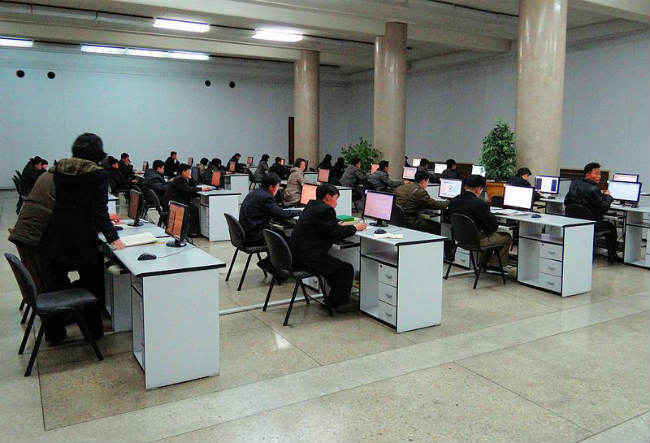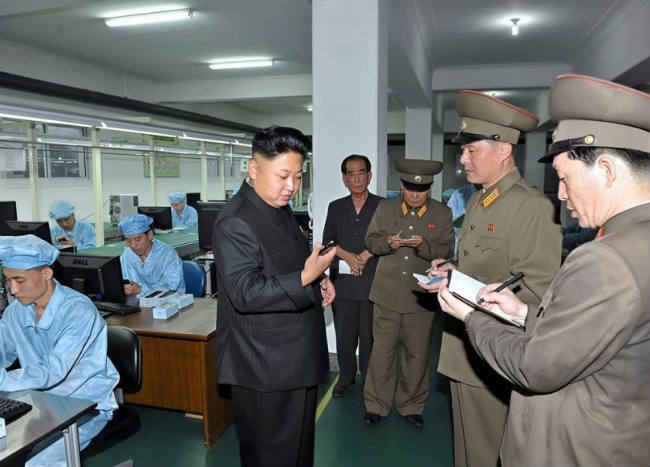A glimpse at tech inside North Korea

For a country that may trigger a war with one of the most technologically advanced nations in the world, very little is known about the sort of tech that is available inside North Korea
For a country that could potentially trigger World War 3, there is very little the world knows about North Korea. The communist country follows an ideology of self-reliance called Juche, and the media is quite strictly controlled. As a result, it’s quite tricky to learn about consumer tech practices inside the so called Hermit Kingdom. Back in 2010, during the football World Cup in South Africa, the coach of the North Korean Football team reportedly said that he was receiving tactical advice during matches though phones that were not visible to the naked eye. So separating fact from fiction is a really difficult task. Here’s a glimpse at the telecommunication services that seem to be available in North Korea as well as some of the device apparently made in the country.
Wireless/mobile services
North Korean citizens were allowed to use mobile phone in 2002, however, they were temporarily banned for a few years in 2004. In 2008, Egyptian telecommunications company, Orascom secured an agreement with the North Korean Ministry of Posts and Telecommunications to create a new telecom provider that would offer telecom services to the people of the country. Called Koryolink, The service had almost 3 million subscribers by 2015. However, the North Korean government reportedly refused permission to transfer profits from the country to Orascom and even started a second carrier called Byol to compete with Koryolink. While Orascom entered talks to merge the services together, North Korean government apparently proposed that it be the majority partner in any new venture.
Coming back to Koryolink, the company does offer 3G services, however, you cannot access the internet. You can use it to access Kwangmyong though. A 2011 report states that 94 percent of the population of the country is covered by 3G, which only covers 14 percent of the territory.
Fixed line internet services
While the country does indeed have global internet access, it’s mostly limited to use by government employees for official purposes and by foreigners residing in the country (not tourists). Most of the online services available to individuals and institutions are through a domestic-only intranet service called Kwangmyong. The network offers a bunch of services like email, information and more. The country even seems to have its own social networking service that can be used to send birthday wishes.
There also seem to be some cyber cafes in the country’s capital, Pyongyang, which don’t use Windows. The country apparently uses its own OS called Red Star OS. To browse, you have to use an adapted version of the Firefox browser, named Naenara. One of the quirkiest features of the OS is that when you type in the name of North Korean Leader, Kim Jong-Un, the size of the text becomes slightly larger than the words surrounding it.
Smartdevices
Image source: KCNA/Reuters
In 2013, the country launched the Arirang, its own smartphone. Specifications of the smartphone were not released, however, reports suggested that it may be a clone of a phone called the Uniscope U1201, which is manufactured in China. The Uniscope smartphone comes with a 4.3-inch IPS HD display and a dual-core processor. It sports an 8MP camera at the back and is equipped with 1900mAh battery. It is also said to sport a modified version of Android 4.0.4.
The country also has a tablet called Samjiyon. The device is said to sport a 7-inch screen with a resolution of 1024×768 pixel display and is powered by a 1.2GHz processor. Like the Arirang, the tablet comes with a modified version of Android 4.0.4 and comes with a bunch of preloaded apps including a Korean language version of Angry Birds Rio.
However, one of the most interesting devices is the Ullim tablet. Not because of its specifications (it is said to be based on a Chinese tablet called Hoozo Z100), but because it apparently takes the concept of privacy to new depths. The researchers from Enno Rey Netzwerke (ERNW) in Germany, spent months analyzing an Ullim tablet and noted that North Korean engineers make major modifications to the OS that would allow for a significant level of surveillance on users and high level of control on the content that can be accessed on the device.
These included a software called “Red Flag” that takes screenshots each time a user opens an app. It also records the browser history with the internal identification number of the tablet. There is a watermarking software that records the time as well as computer registry to a file each time it is opened. This could be used to trace back files and how the device moved from person to person. Besides this, there are limitations of what can be installed as well as viewed on the device.
While the tech in North Korea may not be as advanced or open as the rest of the world. It is pretty impressive (and creepy) for a country to create its own infrastructure completely separate from the rest of the world. However, the fact that it completely controls the type of content and information that people have access to is equally scary.







